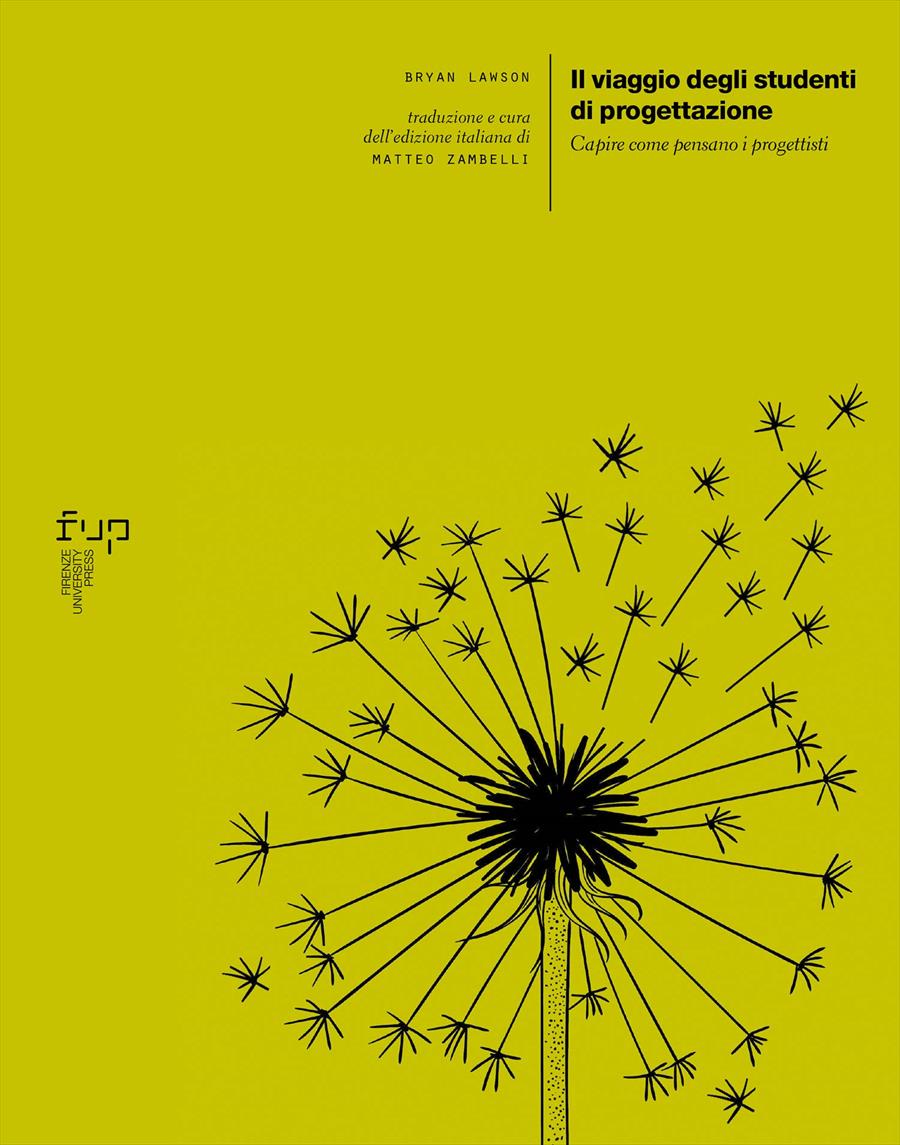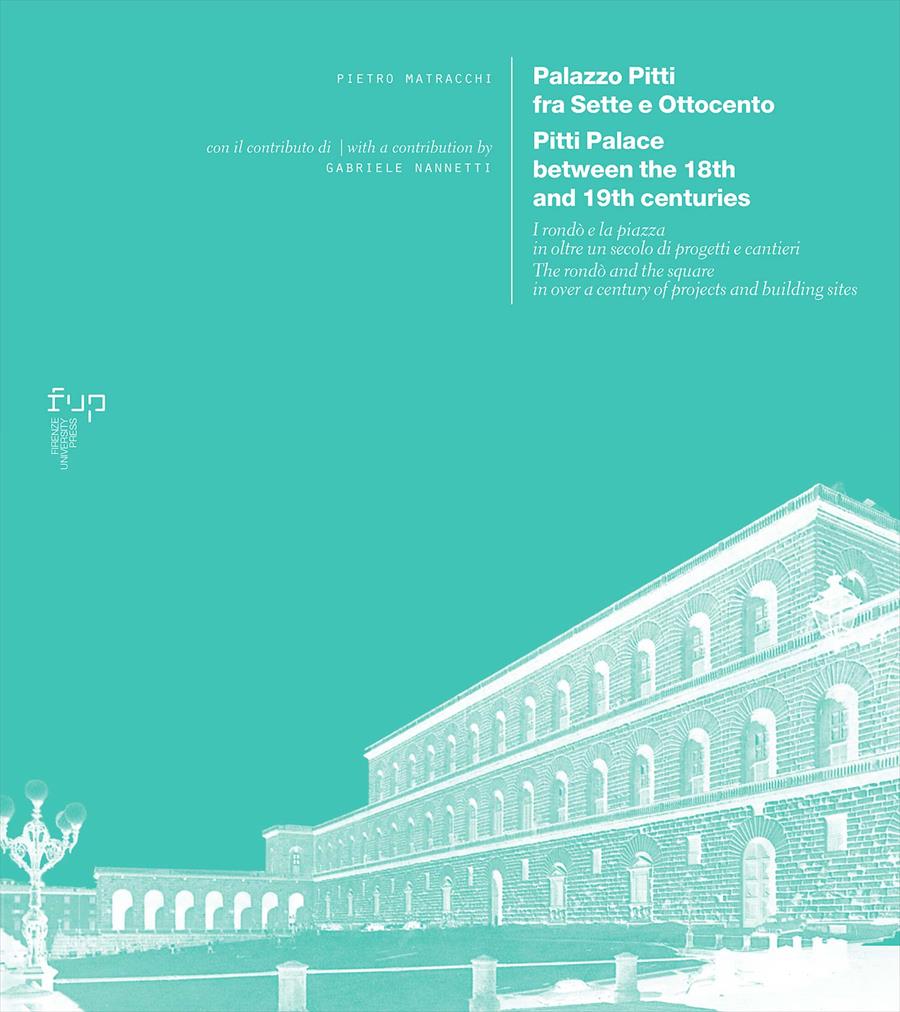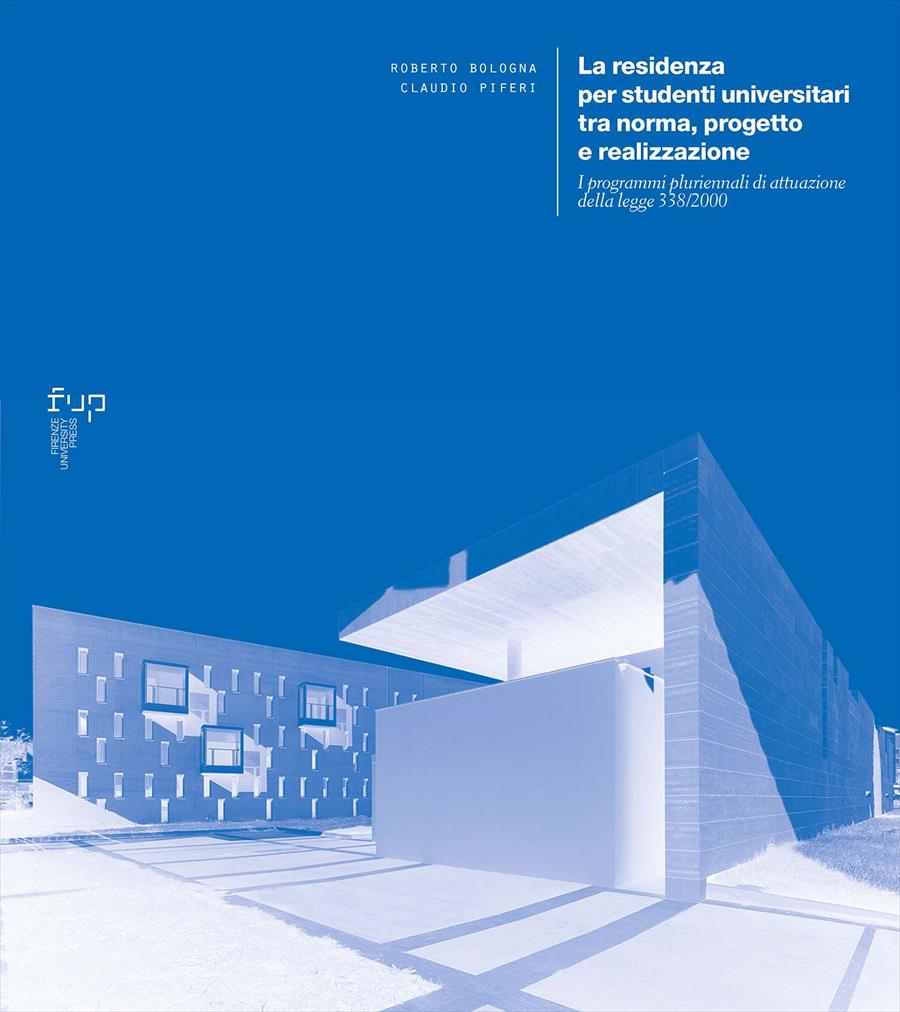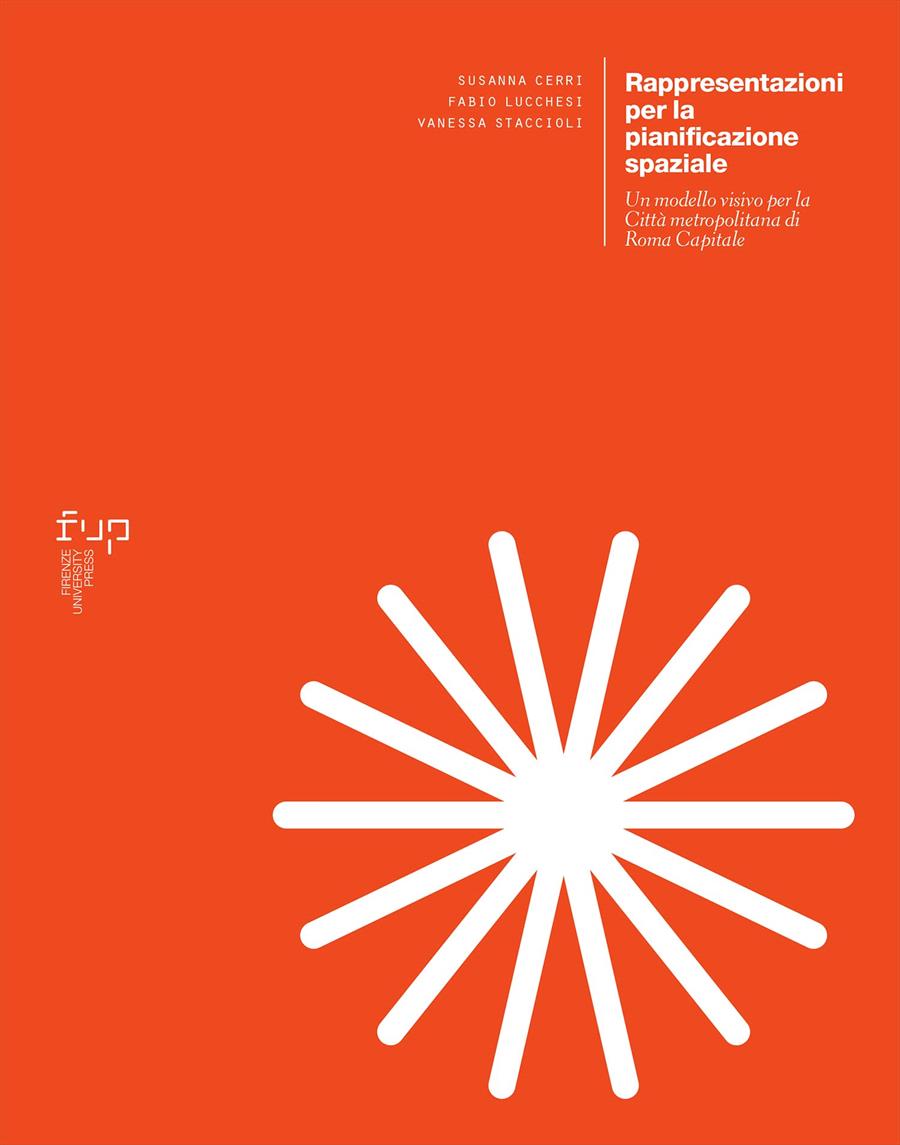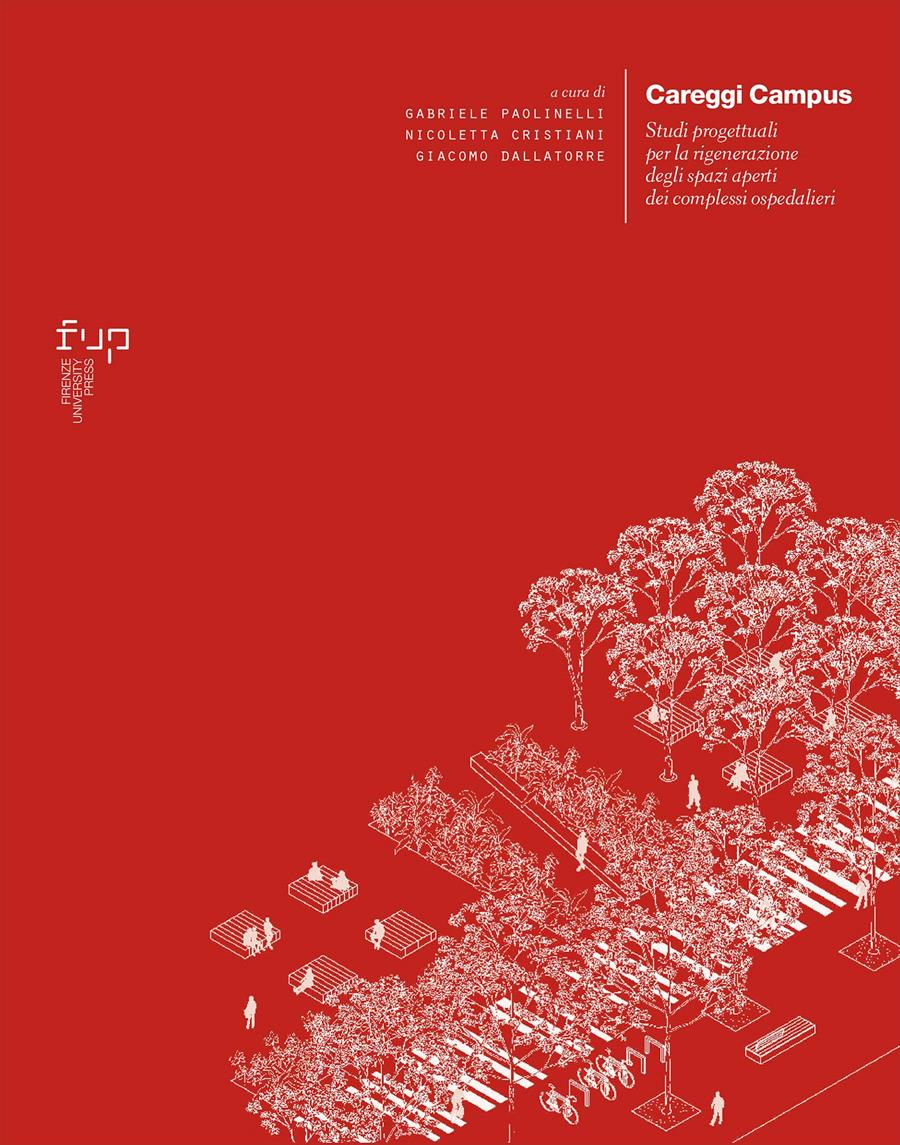Il viaggio degli studenti di progettazione
Capire come pensano i progettisti
- Bryan Lawson,
- Edited by:
- Matteo Zambelli,
Being a professional designer is one of the most intellectually rewarding careers. Learning to become a designer can be tremendous fun but it can also be frustrating and at times painful. What you have to do to become a designer is not often clearly laid out and can seem mysterious. Over the past 50 years or so we have discovered a great deal about how designers think. This book relies upon that knowledge but presents it in a way specifically intended to help the student and perhaps the teacher. The Design Student’s Journey. Undestanding How Designers Think can be seen as a companion volume for the design student.
- Keywords:
- design thinking,
- design studies,
- design teaching,
- design process,
- creativity,
- DOI: 10.36253/979-12-215-0250-3
- Series: Ricerche. Architettura, Pianificazione, Paesaggio, Design
- Scientific Board
- Language: Italian
- Subjects: Architecture
Purchase
University of Sheffield, United Kingdom - ORCID: 0000-0003-0793-5864
University of Florence, Italy - ORCID: 0000-0002-9709-0828
Bryan was Head of School and Dean of the Faculty of Architectural Studies at the University of Sheffield in the UK. He is now Professor Emeritus and has held professorial posts at universities in Singapore, Australia, Malaysia, and Hong Kong.
Matteo Zambelli is an architect, PhD in Construction Engineering and associate professor at DIDA (Department of Architecture, University of Florence). Design methods and the pedagogy of architecture and design are some of the topics of his research. The last two books he wrote are Inseminations (with Juhani Pallasmaa) and La conoscenza per il progetto (Knowledge for Designing).
- Ahmed, S., K.M. Wallace and L.T. Blessing (2003). “Understanding the differences between how novices and experienced designers approach design tasks”. Research in Engineering Design 14(1): 1-11.
- Aiello, C. (2014). Digital and Parametric Architecture. New York, eVolo Press.
- Alexander, C. (trad. it. 1979, ed. orig. ing. 1964). Note sulla sintesi della forma. Milano, Il Saggiatore.
- Anthony, K. H. (1991). Design Juries on Trial: The Renaissance of the Design Studio. New York, Van Nostrand Reinhold.
- Archer, L.B. (1969). “The structure of the design process”. Design Methods in Architecture. G. Broadbent and A. Ward. London, Lund Humphries.
- Austin, S., J. Steele, S. Macmillan and P. Kirby (2001). “Mapping the conceptual design activity of interdisciplinary design teams”. Design Studies 22(3): 211-232.
- Bartlett, F.C. (1958). Thinking. London, George Allen and Unwin.
- Benfield, E. (1940). Purbeck Shop: A Stoneworker’s Story of Stone. Cambridge, Cambridge University Press.
- Bilda, Z. and H. Demirkan (2003). “An insight on designers’ sketching activities in traditional versus digital media”. Design Studies 24(1): 27-50.
- Broadbent, G. (1973). Design in Architecture. New York, John Wiley.
- Cairns, G.M. (1996). “User input to design: confirming the ‘User-Needs Gap’ model”. Environments by Design 1(2): 125-140.
- Candy, L. and E. Edmonds (1996). “Creative design of the Lotus bicycle: implications for knowledge support systems research”. Design Studies 17(1): 71-89.
- Cerulli, C., C. Peng and B. Lawson (2001). “Capturing histories of design processes for collaborative building design development: field trial of the ADS prototype”. Computer Aided Architectural Design Futures 2001. B. de Vries, J. van Leeuwen and H. Achten. Dordrecht, Kluwer Academic Publishers: 427-438.
- Chapman, F.B. (1973). Flute Technique. Oxford, Oxford University Press.
- Cooper, G., C. Cerulli, B.R. Lawson, C. Peng and Y. Rezgui (2005). “Tracking decision-making during architectural design”. ITcon 10:125-139.
- Cross, N. (1982). “Designerly ways of knowing”. Design Studies 3(4): 221-227.
- Cross, N. (1990). “The nature and nurture of the design ability”. Design Studies 11(3): 127- 140.
- Cross, N. (2001). “Can a machine design?” MIT Design Issues 17(4): 44-50.
- Cross, N. (2011). Design Thinking: Understanding How Designers Think and Work. Oxford, Berg.
- Darke, J. (1978). “The primary generator and the design process”. New Directions in Design Research: Proceedings of EDRA 9. W.E. Rogers and W.H. Ittleson. Washington, EDRA: 325-337.
- de Bono, E. (1967). The Use of Lateral Thinking. London, Jonathan Cape.
- de Bono, E. (1971). Practical Thinking. London, Jonathan Cape.
- de Bono, E. (2004, ed. orig. ing. 1970). Creatività e pensiero laterale. Manuale di pratica della fantasia. Milano, Rizzoli.
- De Groot, A.D. (1965). Thought and Choice in Chess. The Hague, Mouton.
- Doidge, C., R. Sara, R. Parnell and M. Parsons (2000). The Crit. Oxford, Architectural Press.
- Dorst, C.H. (2006). Understanding Design: 175 Reflections on Being a Designer. Amsterdam, BIS Publishers.
- Dreyfus, H.L. and S. Dreyfus (2005). “Expertise in real world contexts”. Organization Studies 26(5): 779-792.
- Dutton, T.A. (1991). “The hidden curriculum and the design studio: toward acritical studio pedagogy”. Voices in Architectural Education. T.A. Dutton. New York, Bergin and Garvey: 165-194.
- Eckert, C. and M. Stacey (2000). “Sources of inspiration: a language of design”. Design Studies 21(5): 523-538.
- Edmonds, E.A. and L. Candy (1996). “Supporting the creative user: a criteria-based approach to interaction design”. Creativity and Cognition. L. Candy and E.A. Edmonds. Loughborough, LUTCHI: 57-66.
- Ellis, E. (1992). “Utzon breaks his silence”. The Sydney Morning Herald, 31 October. Sydney.
- Emett, R. (s.d.). Citazione dal sito della Rowland Emett Society: www.rowlandemett.com (ultimo accesso 18-09-2018).
- Gibson, J.J. (2014, ed. orig. ing. 1986). L’approccio ecologico alla percezione visiva. Milano, Mimesis.
- Goel, V. (1995). Sketches of Thought. Cambridge, MA, MIT Press.
- Goldschmidt, G. (1998). “Creative architectural design: reference versus precedence”. Journal of Architectural and Planning Research 15(3): 258-270.
- Gordon, W.J.J. (1961). Synectics: The Development of Creative Capacity. New York, Harper and Row.
- Gregory, S.A. (1966). The Design Method. London, Butterworths.
- Groak, S. (1992). The Idea of Building: Thought and Action in the Design and Production of Buildings. London, E. & F.N. Spon.
- Gropius, W. (2004, ed. orig. ing. 1935). La nuova architettura e il Bauhaus. Milano, Abscondita.
- Gross, M. (1994). “The fat pencil, the cocktail napkin, and the slide library”. Proceedings, Association for Computer Aided Design in Architecture, National Conference, St Louis.
- Harbison, R. (1992). Creatures from the Mind of the Engineer: The Architecture of Santiago Calatrava. Zurich, Artemis.
- Hatchuel, A. (2002). “Towards design theory and expandable rationality: the unfinished program of Herbert Simon”. Journal of Management and Governance 5(3): 260-273.
- Heath, T. (1984). Method in Architecture. Chichester, Wiley.
- Hertzberger, H. (1971). “Looking for the beach under the pavement”. riba Journal 78(8).
- Hertzberger, H. (1996, ed. orig. ing. 1991). Lezioni di architettura. Roma-Bari, Laterza.
- Heylighen, A. and I.M. Verstijnen (2003). “Close encounters of the architectural kind”. Design Studies 24(4): 313-326.
- Hillier, B. and A. Leaman (19 72). “A new approach to architectural research”. RIBA Journal 79(12).
- Hirst, D. (s.d.). Citazione da WikiQuotesX: www.wikiquotesx.com/quote/ damien-hirst-192402 (ultimo accesso 18-09-2018).
- Howell, W.G. (1970). “Vertebrate buildings”. RIBA Journal 77(3).
- Hudson, L. (1968). Frames of Mind: Ability, Perception and Self-Perception in the Arts and Sciences. London, Methuen.
- Hunt, T. (1999). Tony Hunt’s Sketchbook. Oxford, Architectural Press.
- Hunt, T. (2003). Tony Hunt’s Second Sketchbook. Oxford, Architectural Press.
- Jones, J.C. (1966). “Design methods reviewed”. The Design Method, S.A. Gregory. London, Butterworth.
- Jones, J.C. (1970). Design Methods: Seeds of Human Futures. New York, John Wiley.
- Jones, P.B. (1995). Hans Scharoun. London, Phaidon.
- Khaidzir, K.A.M. and Lawson, B.R. (2013). “The cognitive construct of design conversation”. Research in Engineering Design 24(4): 331-347.
- Kvan, T., J.T.H. Wong and A. H. Vera (2003). “The contribution of structural activities to successful design”. International Journal of Computer Applications in Technology 16(2/3): 122-126.
- Lasdun, D. (1965). “An architect’s approach to architecture”. riba Journal 72(4): 184-195.
- Lawson, B. and R. Parnell (2016). “Quality of place and wellbeing”. Oxford Textbook of Creative Arts, Health, and Wellbeing. S. Clift and P. Camic. Oxford, Oxford University Press: 299-308.
- Lawson, B.R. (1979). “Cognitive strategies in architectural design”. Ergonomics 22(1): 59-68.
- Lawson, B.R. (1981). “Gable: an integrated approach to interactive graphical techniques for modelling buildings”. Computer Graphics 81. London, On-Line Publications.
- Lawson, B.R. (1993). “Parallel lines of thought”. Languages of Design 1(4): 357-366.
- Lawson, B.R. (1993). “The art of the process”. The Art of the Process: Architectural Design in Practice. L. Rogers. London, RIBA: 6-11.
- Lawson, B.R. (1994). Design in Mind. Oxford, Butterworth Architecture.
- Lawson, B.R. (2002). “Architecture libraries from a university perspective”. ARCLIB Bulletin 11: 1-4.
- Lawson, B.R. (2002). “Design as research”. Architectural Research Quarterly 6(2): 109-114.
- Lawson, B.R. (2004). What Designers Know. Oxford, Elsevier/Architectural Press.
- Lawson, B.R. (2006). How Designers Think. Oxford, Elsevier/Architectural Press.
- Lawson, B.R. (2010). ‘‘Geometry, pattern and typology”. Building Ideas. I. Latham. London, Right Angle: 14-33.
- Lawson, B.R. (2011). “Of sails and sieves and sticky tape”. Distributed Intelligence in Design. T. Kocaturk and B. Mejdoub. Chichester, Wiley-Blackwell: 3-15.
- Lawson, B.R. (2014). “The healthcare campus at Grangegorman”. The Grangegorman Master Plan in Dublin – An Urban Quarter with an Open Future. J.M. O’Connor. Kinsale, Co. Cork, Oysterhaven.
- Lawson, B.R. and C.H. Dorst (2009). Design Expertise. Oxford, Elsevier/Architectural Press.
- Lawson, B.R. and S. Roberts (1991). “Modes and features: the organization of data in CAD supporting the early phases of design”. Design Studies 12(2): 102-108.
- Lawson, B.R. and S.M. Loke (1997). “Computers, words and pictures”. Design Studies 18(2): 171-184.
- Lawson, B.R., M. Bassanino, M. Phiri and J. Worthington (2003). “Intentions, practices and aspirations: Understanding learning in design”. Design Studies 24(4): 327-339.
- Le Corbusier (1973, ed. orig. fr. 1923). Verso una architettura. Milano, Longanesi & C.
- Lindsey, B. (2002, ed. orig. ing. 2001). Gehry Digitale. Resistenza materiale / Costruzione digitale. Torino, Testo & Immagine.
- Lloyd, P., B.R. Lawson and P. Scott (1996). “Can concurrent verbalisation reveal design cognition?” Analysing Design Activity. N. Cross, H. Christiaans and K. Dorst. Chichester, Wiley: 437-463.
- Lloyd, P.A. and H.M.J.J. Snelders (2003). “What was Philippe Starck thinking of”. Design Studies 23: 237-253.
- Loewy, R. (1979). Industrial Design. London, Laurence King.
- Lyon, P. (2011). Design Education: Learning, Teaching and Researching Through Design. Oxford, Routledge.
- Lyons, E. (1968). “Too often we justify our ineptitudes by moral postures”. RIBA Journal 75(5).
- Maguire, R. (1971). “Architects’ approach to architecture: nearness to need”. RIBA Journal 78(4): 140-148.
- March, L. and P. Steadman (1974). The Geometry of Environment. London, Methuen.
- Marx, K. (1980, ed. orig. ted. 1867). Il capitale. Roma, Editori Riuniti.
- Mitchell, W. (1990). The Logic of Architecture: Design, Computation, Cognition. Cambridge MA, MIT Press Press.
- Norberg-Schulz, C. (1977, ed. orig. ing. 1965). Intenzioni in architettura. Roma, Officina Edizioni.
- Norman, D.A. (1997, ed. orig. ing. 1988). La caffettiera del masochista. Il design degli oggetti quotidiani. Firenze, Giunti.
- Page, J.K. (1972). “Planning and protest”. Design Participation. N. Cross. London, Academy Editions.
- Pevsner N. (1987, ed. orig. ing. 1943). Storia dell’architettura europea. Bari, Laterza.
- Pilling, S. and B. Lawson (1996}. “The cost and value of design”. The Architects’ Journal 203(9-7 March): 46-47.
- Porter, T. and S. Goodman (1980). Manual of Graphic Techniques for Architects, Graphic Designers and Artists. London, Astragal.
- Porter, T. and S. Goodman (1983). Manual of Graphics Techniques 3 for Architects, Graphic Designers and Artists. London, Astragal.
- Porter, T. and S. Goodman (1988). Designer Primer for Architects, Graphic Designers and Artists. London, Butterworth Architecture.
- Portillo, M. and J.H. Dohr (1994). “Bridging process and structure through criteria”. Design Studies 15(4): 403-416.
- Pugin, A.W.N. (1973). The True Principles of Pointed or Christian Architecture. New York, Academy Editions Ltd.
- Rand, P. (2016, ed. orig. ing. 1947). Pensieri sul design. Milano, Postmediabooks.
- Riley, J.P. and B.R. Lawson (1982). “RODIN: a system of modelling three-dimensional roof forms”. CAD82Conference Proceedings. Brighton, IPC Press.
- Rittel, H.W.J. and M.M. Webber (1973). “Dilemmas in a general theory of planning”. Policy Sciences 4(2): 155-169.
- Rowe, P.G. (1987). Design Thinking. Cambridge MA, MIT Press.
- Roy, R. (1993). “Case studies of creativity in innovative product development”. Design Studies 14(4): 423-443.
- Ryle, G. (1949). The Concept of Mind. London, Hutchinson.
- Schön, D.A. (1984). “Problems, frames and perspectives on designing”. Design Studies 5(3): 132-136.
- Schön, D.A. (2010, ed. orig. ing. 1983). Il progettista riflessivo. Per una nuova epistemologia della pratica professionale. Bari, Edizioni Dedalo.
- Schumacher, P. (2012). The Autopoiesis of Architecture: Vol 2: A New Agenda for Architecture. London, John Wiley.
- Stempfle, J. and P. Badke-Schaub (2002). “Thinking in design teams: An analysis of team communication”. Design Studies 23(5): 473-496.
- Stirling, J. (1965). “An architect’s approach to architecture”. RIBA Journal 72(5).
- Stokes, A. (1934). The Stones of Rimini. London, Faber and Faber.
- Sturt, G. (1923). The Wheelwright’s Shop. Cambridge, Cambridge University Press.
- Suchet, J. (2016). Mozart: The Man Revealed. London, Elliot and Thompson Ltd.
- Suckle, A., Ed. (1980). By Their Own Design. New York, Whitney.
- Suwa, M. and B. Tversky (1997). “What do architects and students perceive in their design sketches? A protocol analysis”. Design Studies 18(4): 385-403.
- Tovey, M. (1992). “Automotive stylists’ design thinking”. Research in Design Thinking. N. Cross, K. Dorst and N. Roozenburg. Delft, Delft University Press: 87-98.
- Tovey, M. (2015). Design Pedagogy: Developments in Art and Design Education. Oxford, Routledge.
- Ulrich, R.S. (1984). “View through a window may influence recovery from surgery”. Science 224(4647): 420-421.
- Venturi, R. (1980, ed. orig. ing. 1966). Complessità e contraddizioni nell’architettura. Bari, Edizioni Dedalo.
- Wilford, M. (1991). “Inspired patronage”. RIBA Journal 98(4): 36-42.
- Willenbrock, L.L. (1991). “An undergraduate voice in architectural education”. Voices in Architectural Education. T.A. Dutton. New York, Bergin and Garvey: 97-119.
- Wilson, M.A. (1996). “The socialization of architectural preference”. Journal of Environmental Psychology 16(1): 33-44.
- Wittgenstein, L. (2009, ed. orig. ted. 1977). Pensieri diversi. Milano, Adelphi.
- Yeang, K. (1978). Tropical Urban Regionalism: Building in a South-East Asian City. Singapore, Mimar.
- Yeang, K. (2006). Ecodesign: A Manual for Ecological Design. London, John Wiley.
- Yeang, K. (2016). The Skyscraper Bioclimatically Considered. New York, Oro Editions.
- Yeang, K. and T. Leong (2017). lt’s Not Easy Being Green. New York, Oro Editions.
- Zeara-Polo, A. (1995). “Frank Gehry 1991-95. Conversations with Frank O. Gehry”. El Croquis 74-5.
- Zeisel, J. (1984). Inquiry by Design. Cambridge, Cambridge University Press.
- Publication Year: 2023
- Pages: 384
- eISBN: 979-12-215-0250-3
- Content License: All rights reserved
- © 2023 Firenze University Press
- Publication Year: 2023
- Pages: 384
- ISBN: 979-12-215-0249-7
- Content License: All rights reserved
- © 2023 Firenze University Press
- Publication Year: 2023
- eISBN: 979-12-215-0251-0
- Content License: All rights reserved
- © 2023 Firenze University Press
Bibliographic Information
Book Title
Il viaggio degli studenti di progettazione
Book Subtitle
Capire come pensano i progettisti
Editors
Matteo Zambelli
Authors
Bryan Lawson
Peer Reviewed
Number of Pages
384
Publication Year
2023
Copyright Information
© 2023 Firenze University Press
Content License
Metadata License
Publisher Name
Firenze University Press
DOI
10.36253/979-12-215-0250-3
ISBN Print
979-12-215-0249-7
eISBN (pdf)
979-12-215-0250-3
eISBN (xml)
979-12-215-0251-0
Series Title
Ricerche. Architettura, Pianificazione, Paesaggio, Design
Series ISSN
2975-0342
Series E-ISSN
2975-0350
